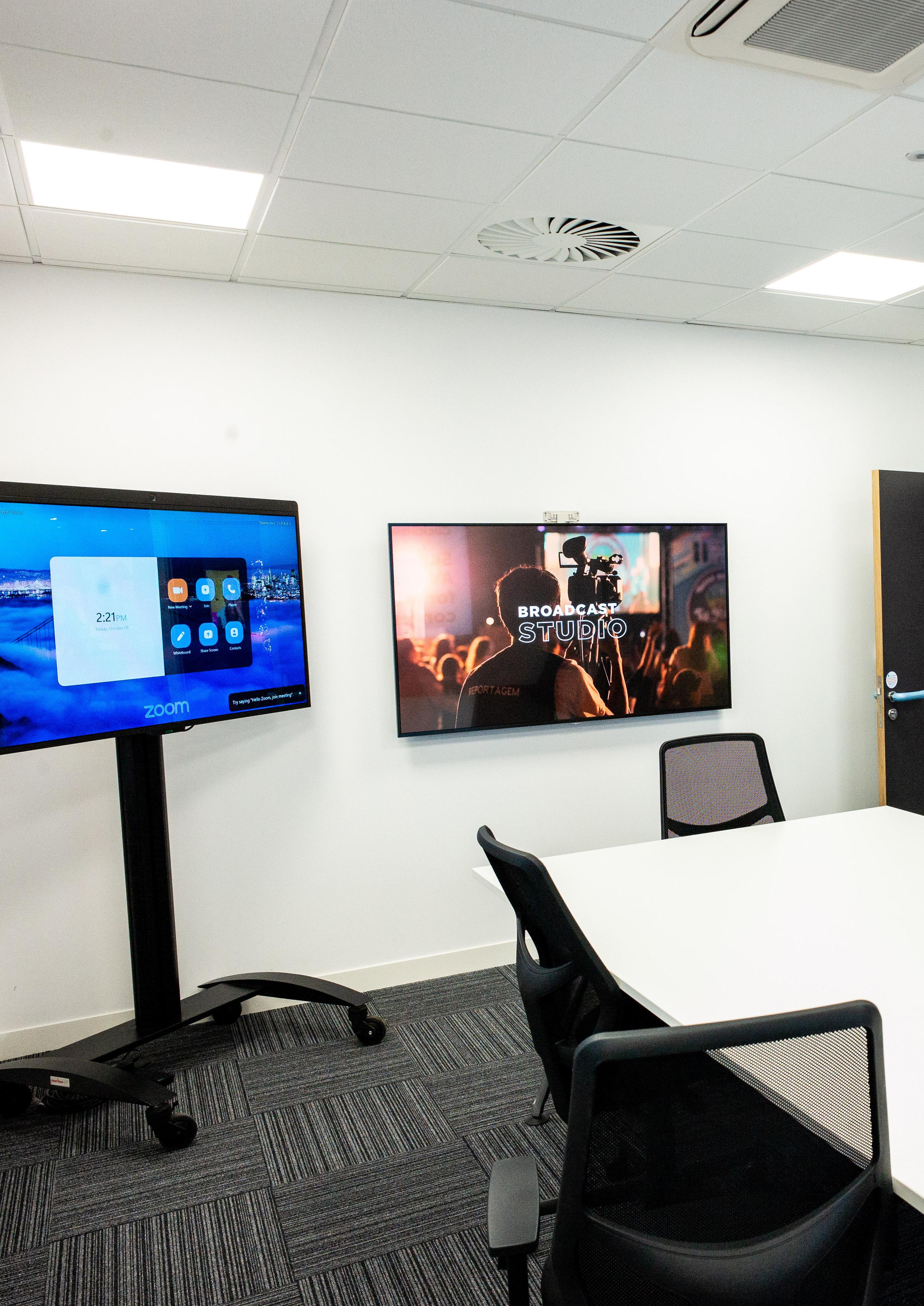
3 minute read
Work smarter in a smart building
work
smarter in a smart building
The workplace has changed significantly over the past 20 years and recent innovations have been accelerated further by COVID-19. Businesses have replaced the traditional office with workspaces that enable agile working and activity-based working.
Through the Internet of Things (IoT) the Smart Home has emerged, giving us control of our home through a remote device. Want to turn the heating up on your way home from work or dim the lights without getting up? No problem. We now expect this conveniency in the workplace too.
With smart technology such as heat mapping, room and desk booking and smart cameras, the office has been propelled into the modern world. With these tools, businesses can effectively manage spaces, creating a seamless experience in the office.
Heat mapping Heat mapping uses smart technology to report real-time occupancy maps and utilisation data such as room reservations and zone bookings. This data helps determine how office spaces are being used and how they can be improved. This is especially important in the agile era where safety and flexibility are key.
Understanding the conditions of each office space shows whether a space is overcrowded or underutilised, allowing employees to make informed decisions on where they work and office managers to make smart renovation to optimise every workspace. Global business Deloitte has used heatmapping to predict busy and quiet times, giving employees insights before they even enter an office. They use digital wayfinding screens in their office connected to sensors, showing realtime availability and occupation levels.
Desk booking In a deskless office, employees have no assigned desk. This provides a flexible work schedule, allowing employees to book time in the office when they will be most productive. Desk booking ensures businesses can manage the space and employees can reserve a desk in advance. Desk sensors can also track occupancy and space usage in real-time. This is useful for measuring analytics such as which area is most popular and which day is the busiest.
A deskless office is also a great way to meet and collaborate with different people as you get to work next to different people each day. Additionally, it encourages less clutter and cleaner desks as people don’t own a desk to leave their personal items behind.
Room booking Room booking solutions can be applied to any workspace such as meeting rooms, huddle spaces or boardrooms to optimise meetings. These solutions provide clear information and remove booking nuisances. It means workers don’t have to stroll around the office looking for a free room, colleagues can easily locate each other and remote workers can book ahead for when they come into the office.
Many meeting rooms are subject to ghost bookings whereby employees book a meeting room but do not attend, thus wasting valuable space. To combat this, room booking solutions automatically release meeting rooms when no one shows up.
Smart cameras Smart video conferencing solutions can majorly improve meetings for agile teams. Video enabled meetings are key to ensure remote workers and in-office workers alike feel connected. Using highquality tools that enable everyone to be seen and heard equally is pivotal.
Auto-tracking cameras allow users to walk around the room freely as they would in a traditional meeting without worrying if they’re in the shot. Likewise, cameras that zoom in on the speaker and isolate their audio are beneficial to create highquality experiences. UC cameras that work straight out of the box ensure meetings can get started with efficiency, maximising productivity.
With smart video conferencing solutions, teams can feel connected in meetings for seamless collaboration and increased employee wellbeing. No matter where employees are working from, they can share the meeting experience as if they were all physically in the room together.
A smart office incorporates technology that streamlines workflows, increases productivity and allows businesses to adapt and grow.










